Secured Transactions on the MEE: Highly Tested Topics and Tips
 Secured Transactions on the Multistate Essay Exam: Highly Tested Topics and Tips
Secured Transactions on the Multistate Essay Exam: Highly Tested Topics and Tips
Here, we give you an overview of Secured Transactions on the MEE. We will reveal some of the highly tested topics and give you tips for approaching a Secured Transactions MEE question.
Secured Transactions on the Multistate Essay Exam
1. First, be aware of how Secured Transactions is tested
Secured Transactions is tested, on average, about once a year. It is generally tested on its own and is not combined with another subject. However, it has been tested in the past with Contracts and Sales and with Real Property.
Secured Transactions is somewhat predictable in terms of what is tested. However, because many students find Secured Transactions challenging to learn, even predictable topics can pose difficulties. Here, we give you some tips in terms of what to know and how to best study for Secured Transactions on the MEE.
2. Be aware of the highly tested Secured Transactions issues
The examiners tend to test several of the same issues in Secured Transactions MEE questions. You can maximize your score by being aware of these highly tested issues. (We have a summary of these in our MEE One-Sheets if you want to see all of them and have them all in one place.)
Some of the highly tested Secured Transactions Multistate Essay Exam issues include:
Application of Article 9
Article 9 applies to the following transactions (even if the parties do not realize that they are entering into a secured transaction!):
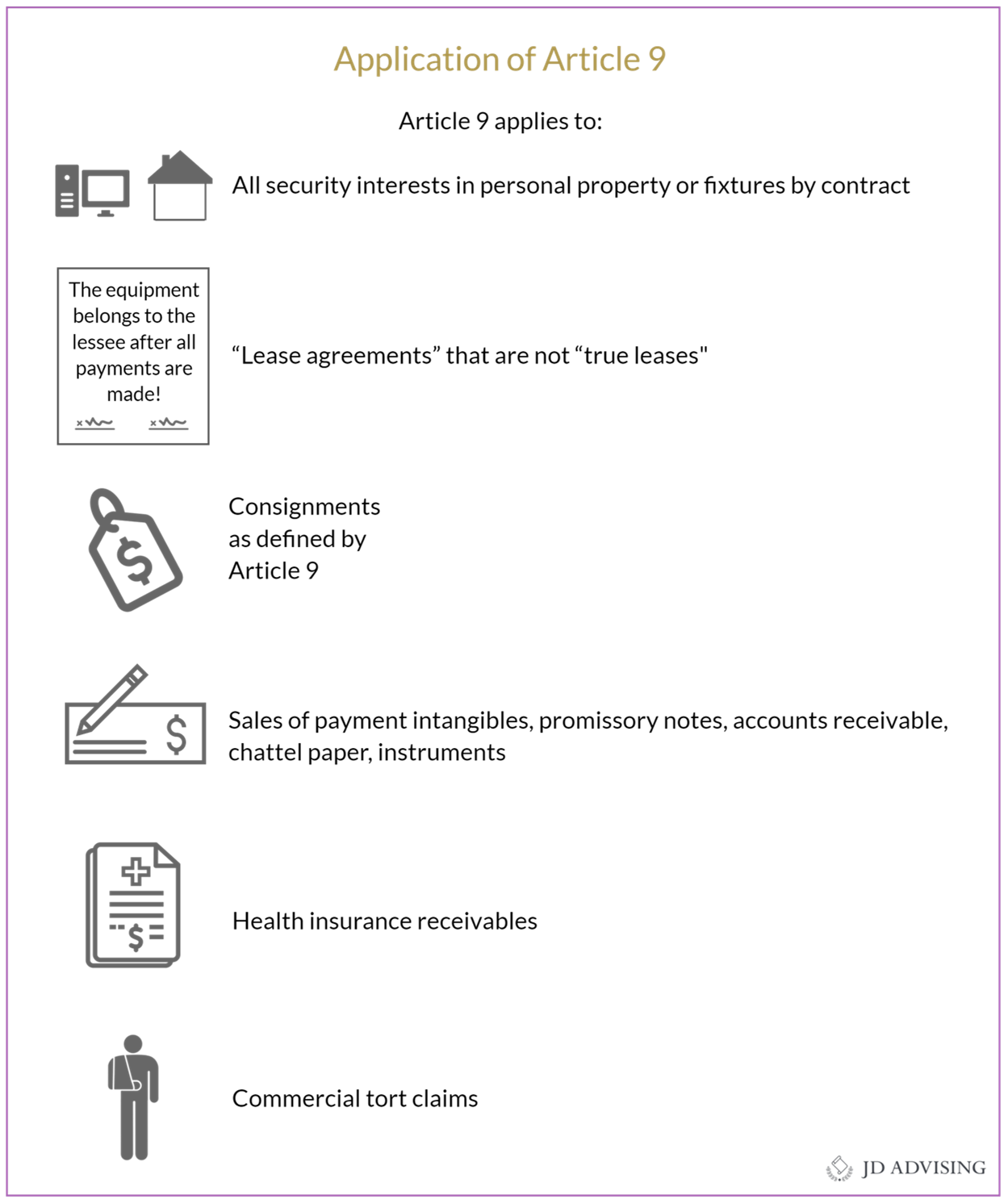
Goods
Be aware of the distinctions between the four types of goods. Goods can be classified into the following categories:
- Consumer goods: goods bought primarily for personal, family, or household purposes.
- Inventory: Goods other than farm products that are for sale or lease or to be furnished under a contract. Examples include inventory at a store, raw materials, work in process, or materials used or consumed in a business (this type of good is highly tested on the MEE).
- Farm products: goods such as crops, livestock, and supplies used or produced in a farming operation (this type of good has never been tested on the MEE).
- Equipment: goods other than consumer goods, inventory, or farm products).
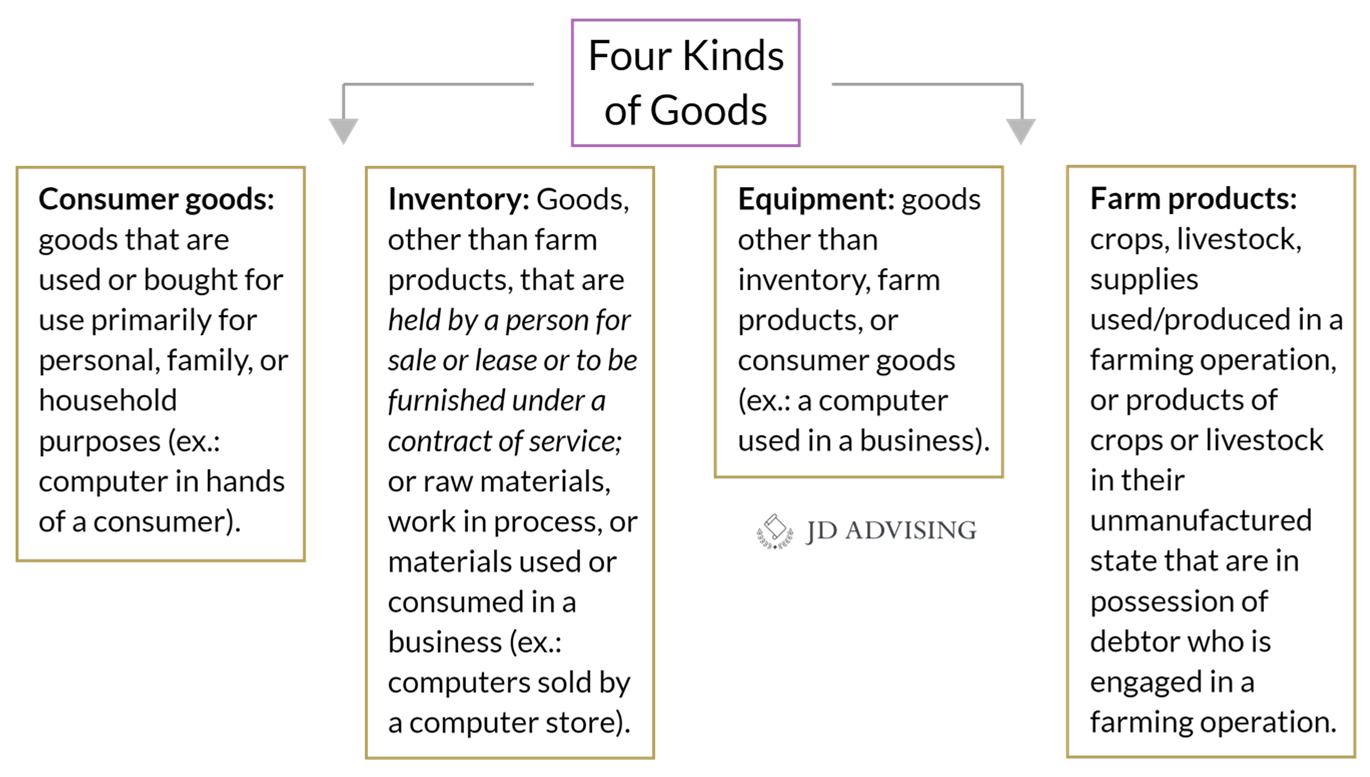
General intangibles and intangibles, such as accounts and chattel paper, have rarely been tested on the MEE. Documents, commercial tort claims, investment property, and general intangibles have not been tested on the MEE in over 20 years. Accordingly, we recommend that you focus on the classification of collateral regarding goods, as that is what is highly tested on the MEE.
Attachment
Attachment is how the security interest “attaches” to the collateral. Attachment makes the security agreement binding as between the secured party and the debtor. If attachment does not occur, the secured party will not have an enforceable security interest.
Memorize and be prepared to state in your essay the three requirements for attachment any time attachment is an issue:
- value must be given by the secured party to the debtor,
- the debtor must have rights in the collateral, and
- there must be a binding security agreement.
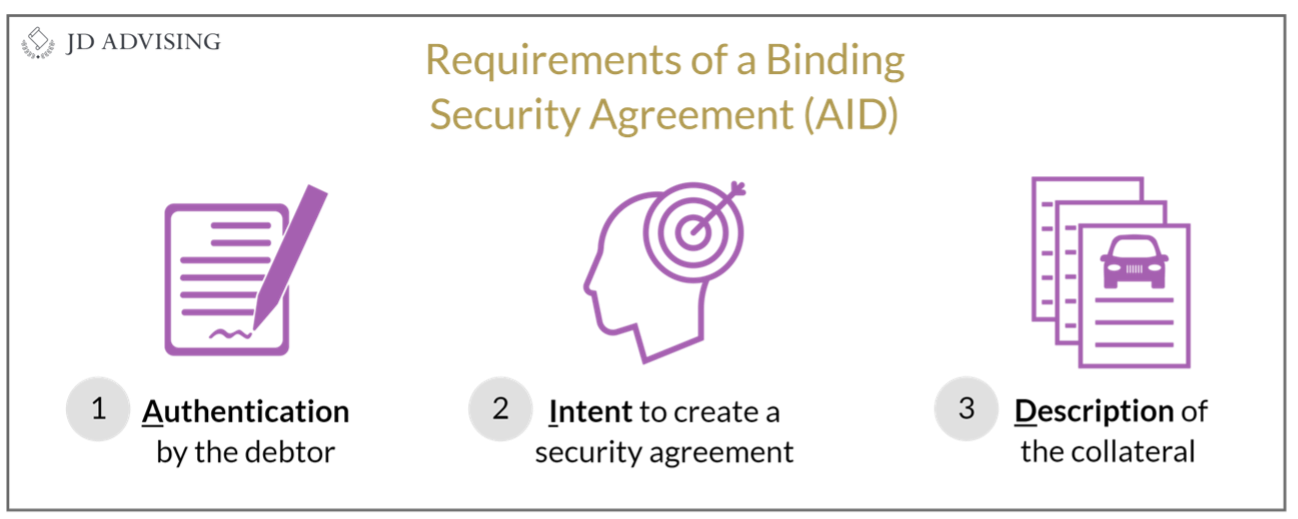
Perfection
- Perfection is a frequently tested issue that arises when there are multiple creditors who have an interest in a single piece of collateral. Perfection is an issue only when there is one more than one secured party competing for a single piece of collateral. Students often confuse attachment and perfection. Remember that attachment is required for the secured party to have a secured interest in the collateral. If the question asks if a party has a secured interest, be sure to discuss attachment. If the question asks who has priority regarding a piece of collateral, you need to discuss perfection. There are four ways to perfect: filing, automatic perfection, possession, and control. Filing and automatic perfection are highly tested whereas possession and control are not.
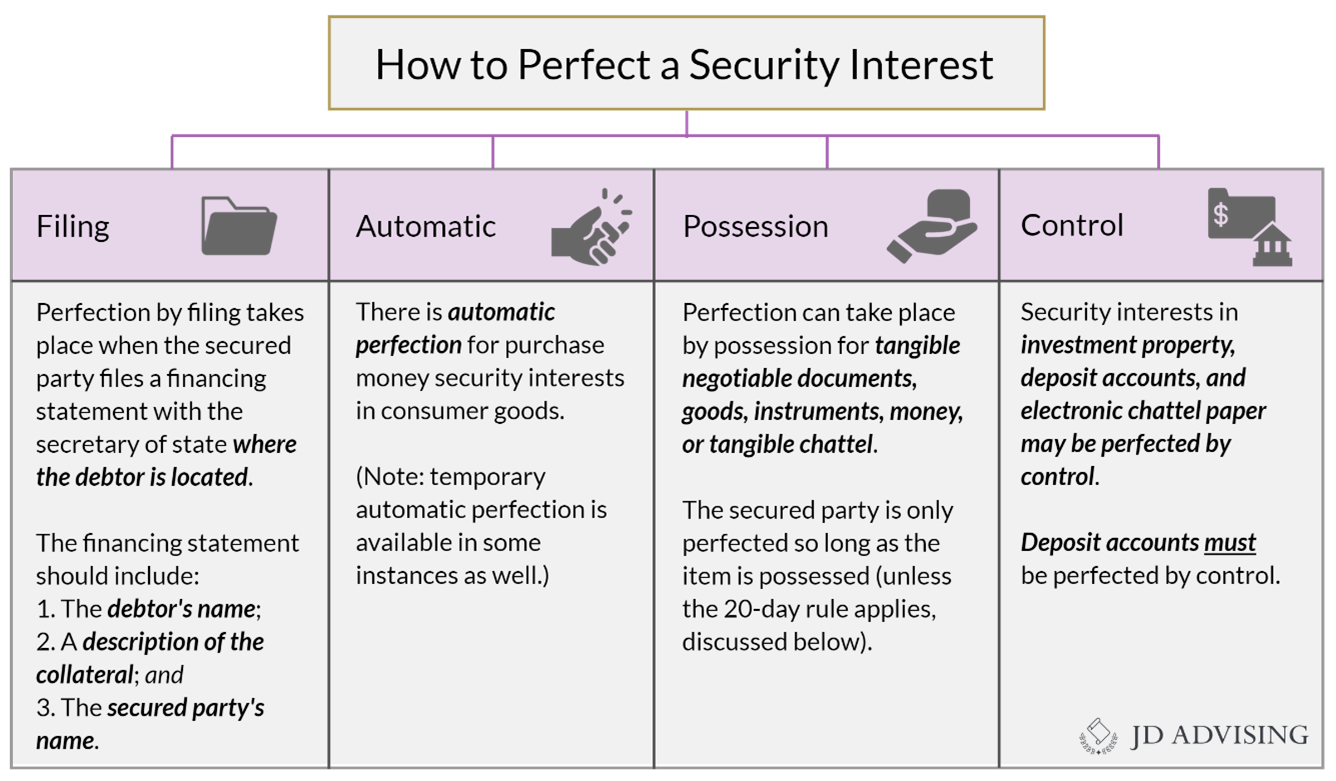

- The first to file or perfect: When two secured parties have a security interest in the same collateral, the first to file or perfect has priority. If no party perfects, then the first to attach has priority. This principle has been tested numerous times so make sure you memorize and understand it!

3. Make sure you understand Secured Transactions basics
Secured Transactions can be difficult, especially if you are learning it for the first time in bar prep. We recommend you seek tutoring or other assistance if you struggle with understanding the basics of this subject because it is going to be very difficult to answer a Secured Transactions MEE question without an understanding of the fundamental rules.
A few notes on Secured Transactions basics:
- Secured transactions are voluntary transactions. Both the creditor and the debtor agree to it ahead of time. In contrast, judicial liens are involuntary for the debtor and are the result of judicial order.
- Here is an example of a secured transaction: I ask you to lend me $5,000. You do not trust me to pay you back, so you say no. I say, “Look, I’ll give you my ring, which is worth $5,000, to hold onto. If you lend me the money, and I do not pay you back, at least you have my ring. You can sell the ring and get your money that way. When I am pay back the loan in full, you give me the ring back.” You agree. We have agreed to create a secured transaction (even if we don’t call it that or do not know what a secured transaction is). I am the debtor because I owe you money. You are the secured party. And the ring is the collateral. You will have a security interest in my ring.
- Both the secured party and the debtor have the same goal—they both want the debtor to pay the debt! Neither party wants the secured party to have to foreclose. Some students are under the impression that the secured party wants to foreclose on its interest. (In the example above, you do not want to have to sell my ring. That is a hassle! You would much rather that I just pay you back under the terms of our agreement.)
- As noted above, attachment is how the security agreement “attaches” to the collateral. It is what makes it enforceable. Generally, an authenticated writing is needed (but not always—e.g., not in the case where the secured party has possession, like above).
- Perfection is only an issue when more than one creditor is fighting for priority in the same collateral. This concept appears frequently on the MEE!
4. Learn the basic introductions and vocabulary to use for each set of rules
When answering a Secured Transactions MEE question, using key words—such as “attachment,” “perfection,” “secured party,” “debtor,” “default,” etc.—is key. Some students write entire Secured Transactions essay answers without using one of these words! Even if students understand the basic principles, if they cannot articulate the proper vocabulary they will not score high on a Secured Transactions MEE question.
If you memorize these key vocabulary words and basic concept introductions, you will have more confidence going into the exam. Also, you will maximize your points on the MEE because the grader will certainly be looking for these basic elements in your Secured Transactions MEE answer.
Here are some basic introductions and vocabulary:
- Secured party: the entity loaning money to the debtor in exchange for a security interest in the debtor’s collateral.
- Debtor: the entity borrowing money from the secured party in exchange for a security interest in the debtor’s collateral.
- Collateral: a piece of property that the debtor offers to the secured party to create a security interest.
- Attachment: for the secured party to have a security interest in the collateral, there must be attachment of the security agreement to the collateral. Attachment requires three things: (1) value must be given by the secured party, (2) the debtor must have rights in the collateral, and (3) there must be a binding security agreement between the parties. Additionally, a binding security agreement has three requirements: (1) authentication by the debtor, (2) and intent to create a security agreement, and (3) a description of the collateral. In discussing attachment on the MEE, you want to include all these elements!
- Perfection: Perfection is giving notice to others of the secured party’s security intertest in the collateral. Perfection is not required for a secured party to have a security interest. Students find it helpful to compare the concept of recording a deed in Real Property to perfecting a security interest in Secured Transactions. Neither are required for an interest.
- Default: Default occurs when the debtor does not make the required payments to the secured party (or lender). The lender has a statutory right to repossess the collateral pursuant to the judicial process or via self-help so long as the lender does not breach the peace.

- Fixture: A fixture is a good that has become so related to a particular real property that an interest in the good arises under real property law. Perfection in a fixture requires a fixture filing.
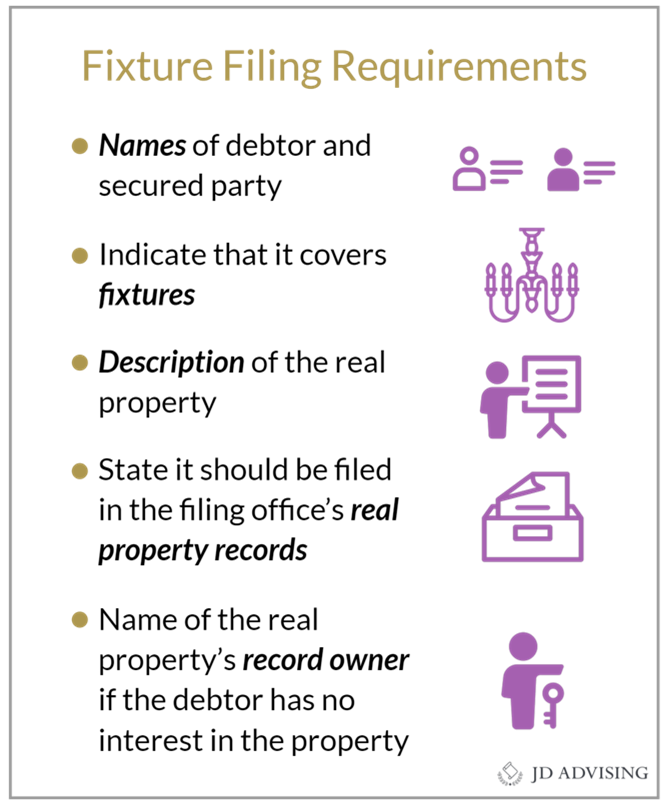
- Purchase-money security interest (PMSI): A purchase-money security interest (PMSI) arises when the goods for which the loan is extended to the debtor is the collateral for the security interest. The general rule is that a PMSI takes priority over a conflicting, perfected security interest in the same goods.

- Proceeds: Whatever is received upon the sale, lease, license, exchange, or other disposition of collateral. In general, a security interest in proceeds remains automatically perfected for 20 days.
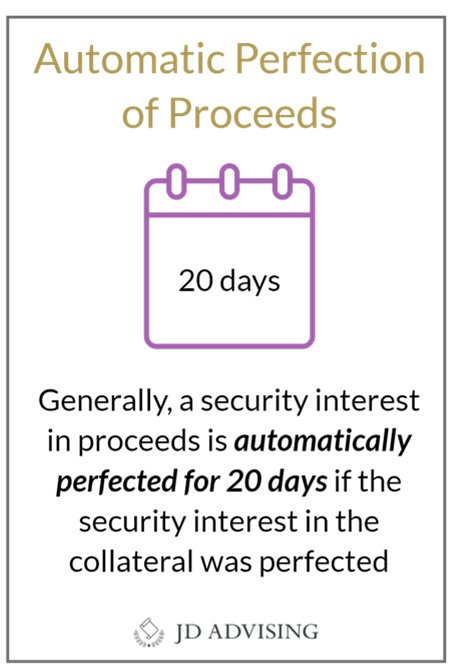
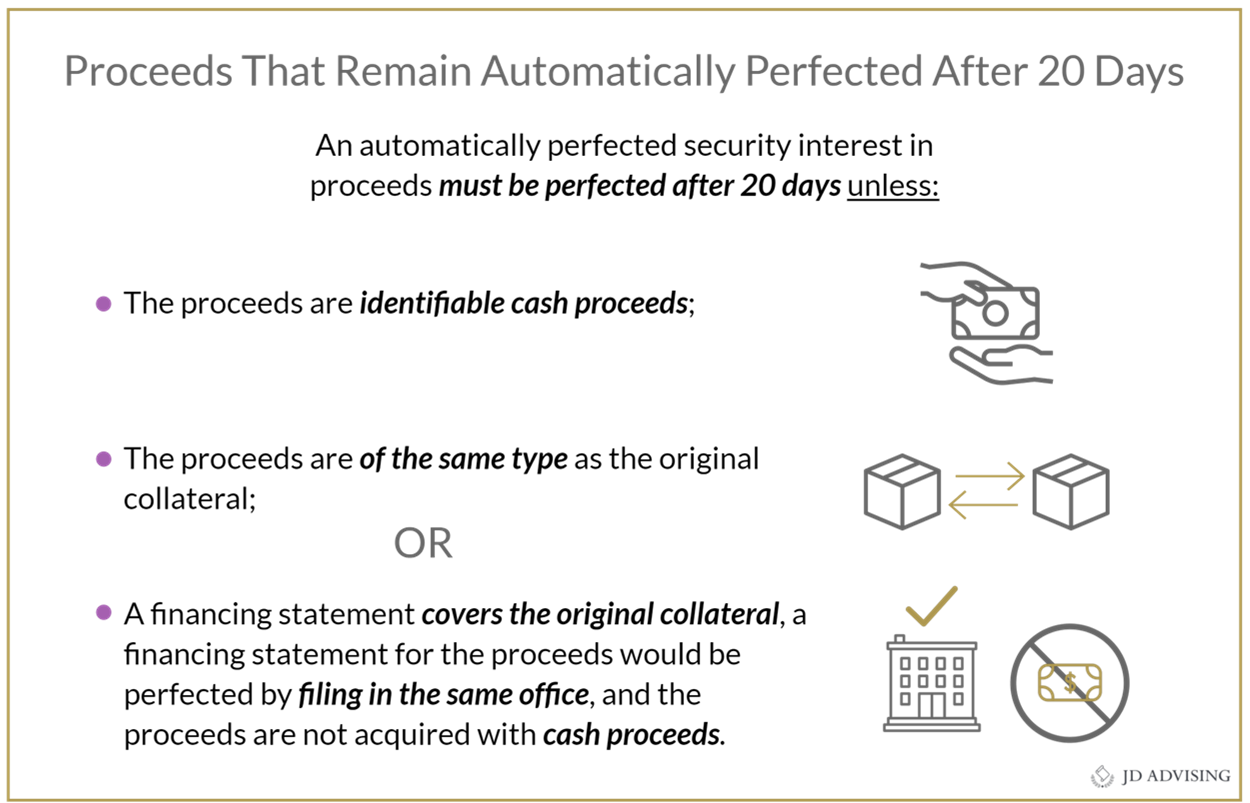
5. Practice!
Practice is critical to scoring well on a Secured Transactions MEE question. Some Secured Transactions concepts can be challenging to learn at first, but they are easier to understand once you see how they are actually tested on the MEE. Many Secured Transactions concepts are tested in the same way on the MEE.
Here, we provide you with some links to free Secured Transactions MEE questions and NCBE point sheets. (If you would like to purchase a book of Secured Transactions MEE questions and NCBE point sheets, check out our MEE books here. You can also see some additional exams on the NCBE website for free here.)
- February 2023 Secured Transactions MEE: this MEE covers PMSI in consumer goods and equipment; attachment requirements; security agreement requirements; application of Article 9; perfection; and financing statement requirements.
- July 2016 Secured Transaction MEE: this MEE covers classification of collateral, attachment, PMSIs, fixtures, perfection, default, and foreclosure via self-help.
- February 2016 Secured Transactions MEE: this MEE covers attachment, buyer in the ordinary course of business, PMSIs in consumer goods, consumer-to-consumer transactions, and perfection as to proceeds.
- February 2014 Secured Transactions MEE: this MEE covers attachment, first to file or perfect priority, and buyer not in the ordinary course of business.
- July 2009 Secured Transactions MEE: this MEE covers application of Article 9 to true leases, perfection priority, default, foreclosure via self-help, and order of payout.
Go to the next topic, Torts.
Seeking MEE Expertise?
🌟 Freebies & Discounts
- Free Bar Exam Resource Center: Explore for leading guides, articles, and webinars.
- Expert-Crafted Bar Exam Guides: Unveil insights on high-frequency MEE topics and strategies for success.
- Free Webinars: Engage with top bar exam experts.
🔥 Top-Rated MEE Resources
- MEE One-Sheets: Boost your confidence with our most popular bar exam product!
- Bar Exam Outlines: Our comprehensive and condensed bar exam outlines present key information in an organized, easy-to-digest layout.
- NEW MEE Mastery Class: Unearth focused, engaging reviews of essential MEE topics.
- Bar Exam Crash Course and Mini Outlines: Opt for a swift, comprehensive refresher.
- MEE Private Tutoring and feedback: Elevate your approach with tailored success strategies.
- MEE Course: Preview our acclaimed five-star program for unmatched instruction, outlines, and questions.
🔥 NEW! Dive deep into our Repeat Taker Bar Exam Course and discover our unrivaled Platinum Guarantee Pass Program.






Leave a Reply
Want to join the discussion?Feel free to contribute!